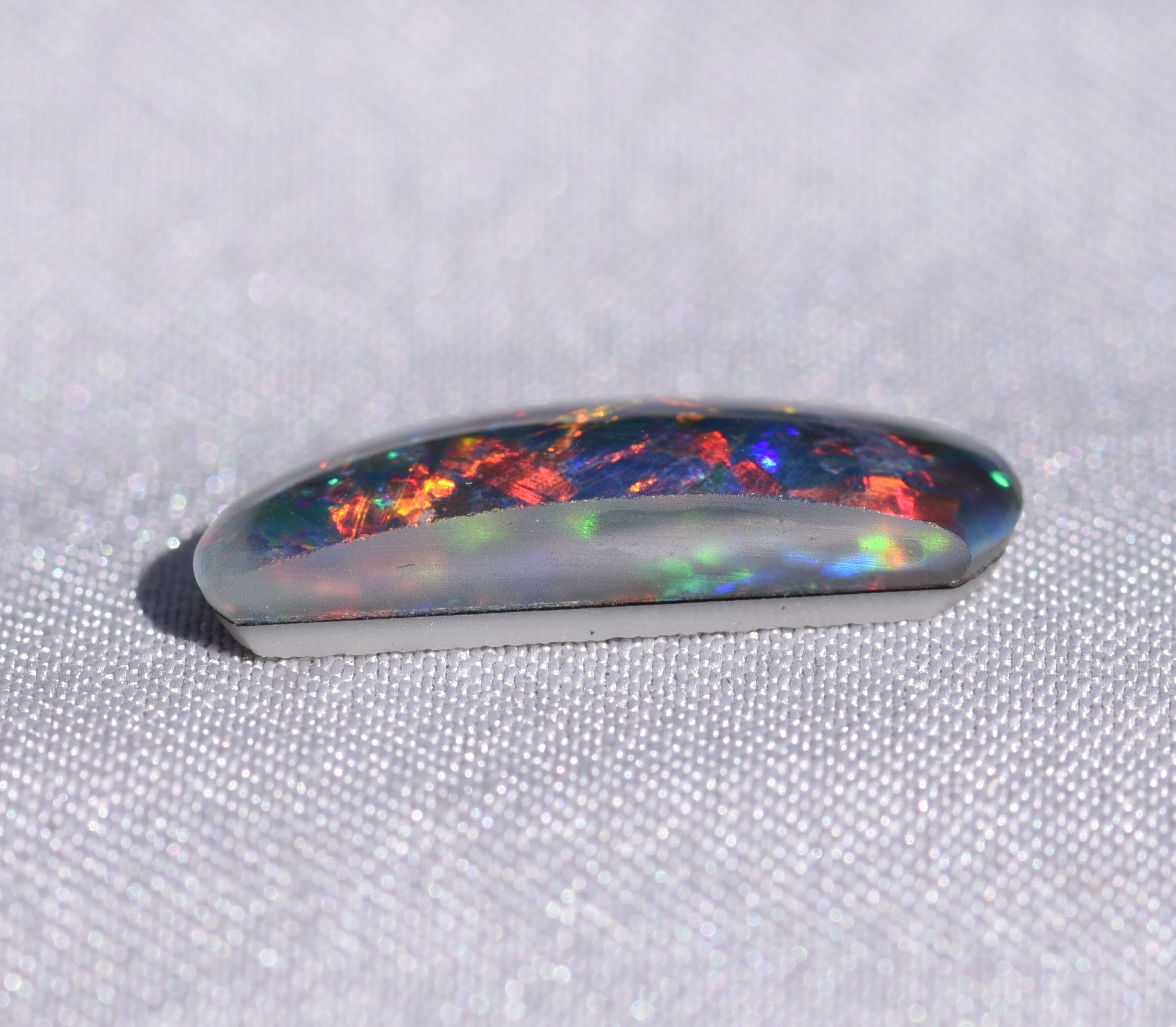Synthetic and Imitation Opals
The first attempt at manufacturing synthetic opal was made soon after the determination of the structure of opal in 1964 Sanders. Details of the procedure used to first synthesise opal are preserved in the original patent documents registered by the CSIRO in Australia, Great Britain and the USA during 1964. The original patents for the synthesis procedure were finally accepted some seven years later, on October 11th 1971.
During this time Pierre Gilson Laboratories were also involved in research into the synthesis of opal, and Gilson’s first opal was manufactured in the late 1960’s; but this man-made opal was of very poor quality. The first commercial production of ‘synthetic’ opal was not manufactured until 1975, with the introduction of the “Gilson” created gemstones, ‘synthetic’ opal was a reality and it began to appear in items of jewellery with its properties and features being reported in gemmological literature.
Hearsay suggests that all of the earliest attempts at manufacturing synthetic opal were dogged by instability of the final product that resulted in the opaline material cracking and crazing.
Today, the accepted procedure for manufacturing both synthetic and imitation silica based opals is essentially the same as those recorded in the original CSIRO patents. Essentially, this consists of:
A method of producing suitably sized spheres of silica.
A method of settling and separating randomly sized spheres into uniform sizes, and depositing or precipitating these into an ordered array.
A method of solidifying, aggregating, dehydrating and compacting the array into a stable product.
Types of man made opal
Man-made simulants of gemstones may be separated into two groups: synthetic gemstones that are an exact chemical equivalent of the natural material; and imitations that are simply look-alikes and otherwise chemically distinct from natural opal. Imitations can be further subdivided into those imitations that have a very similar chemical composition to the natural material, and those that have anentirely different chemical composition but have a similar appearance to the material they are meant to imitate.
In reality, all of the so-called ‘synthetic’ opals are, in fact, imitation opals-for by strict gemmological definition their chemical compositions differ (to variable extents) from those of natural opals. Natural opal is hydrated silica that has the chemical formulae of SiO2.nH2O. The early synthesis of opal attempted to produce synthetic opal with this chemical composition, however it is likely that at some stage during the refinement of the manufacturing process that two modifications were made. First, most of the water was removed from the synthesised opal. The second was the introduction of a suitable ‘stabilizing’ chemical that was designed to preserve the solidity of the end product.
As a group of non-natural types of opal, these man-made opals can be subdivided into several groups:
Mostly silica containing so-called ‘synthetic’ opal, which however contains no water.
An “all silica” (?) variety which is silica stabilised by Zirconia
A ‘polymer’ impregnated silica containing imitation opal. Note that the polymer or resin stabilises the opaline structure.
A category of imitation opals that have been made entirely of polymers or glass.
other Natural gemstones confused with natural opal
At this point it should be noted that there are many other gemstones and minerals which are naturally occurring that may be either miss-identified or miss represented as being precious opal. These types and varieties of gemstones will be discussed in a separate blog on the Opal Academy website.










